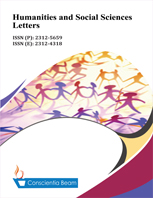A Performance Model of the Indonesian National Police: The Role of Communication Apprehension, Servant Leadership, Group Cohesiveness, and Silence Behavior
DOI:
https://doi.org/10.18488/journal.73.2021.94.326.340Abstract
In line with the trend of community policing at the global level, the Indonesian National Police (POLRI) is expected to be able to enforce the law fairly and humanely, but in ways that protect people. This present study is aimed at finding a theoretical model of the performance of POLRI members. This model involves under-represented variables in the literature on police performance, namely servant leadership (SL), group cohesiveness (GC), silence behavior (SB), and communication apprehension (CA). To confirm the model, which hypothesizes that CA is the mediator of the relationships between SL, GC and SB and police performance, this study uses a quantitative, correlational predictive design with structural equation modeling (SEM) data analysis techniques. Research on 551 police officers in Greater Jakarta (Jakarta, Tangerang, Bekasi), Indonesia, found that the theoretical model partially fits the empirical data. Nevertheless, there are unique and counter-intuitive findings: the higher the servant leadership, the higher the communication apprehension; the higher the servant leadership, the lower the performance of POLRI members; group cohesiveness cannot predict communication apprehension; and the higher the group cohesiveness, the lower the performance of POLRI members. These findings are meaningful for drawing up human resource policies within POLRI, including job analysis, recruitment, selection, work culture, performance appraisal, training, and development. This finding is unique because silence behavior has never been investigated within POLRI. This study also proposes a modified practice of servant leadership within the police institution.

